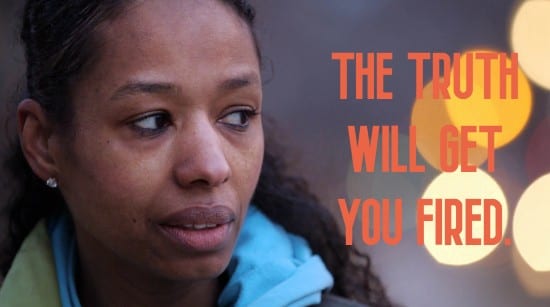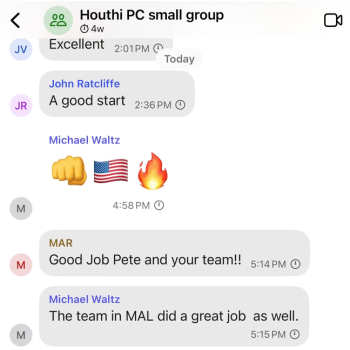“Refugee Ministries Hope to Rebuild,” Stefani McDade reports for Christianity Today.
McDade’s article looks mainly at World Relief, the refugee resettlement ministry begun by the National Association of [white] Evangelicals in the 1940s. The agency was crippled during the Trump years as the anti-immigrant, anti-refugee dreams of white supremacists like Steve Bannon and Steven Miller became official US policy:
Under the Trump administration, the refugee ceiling dropped by 80 percent, down to a record low of 15,000, and agencies drastically scaled back operations as they lost out on the funding that accompanies new refugees. …
The evangelical agency shut down eight of its local offices and laid off over a third of its staff during the Trump administration. Overall, a third of the nation’s resettlement agencies have either stopped resettling refugees or have closed their doors completely over the past four years.
The warning signs were there five years ago, as a crowded field of Republican candidates for their party’s presidential nomination engaged in an unprecedented race to the bottom, each striving to outdo the others with ever-more extreme proposals and rhetoric denouncing immigrants and refugees.

Republican governors egged the candidates on, with all 31 vowing to forbid church groups in their states to resettle Syrian refugees there (“religious liberty!”). Then-candidate Donald Trump had surged in the polls with Republican voters when he proposed a “Muslim ban” and called for shutting down mosques here in America. Sen. Marco Rubio rushed to outdo him by calling for all Muslim-owned restaurants and cafes to be closed.
By November of 2015, anti-immigrant, anti-refugee, and anti-Muslim sentiment had reached such an ugly fever pitch that the United States Holocaust Memorial Museum was compelled to put out a statement calling on “public figures and citizens to avoid condemning today’s refugees as a group.” The anti-refugee sentiment stoked by the Republican base was all-too-familiar for students of history, and deeply concerning for a museum founded “to confront hatred, prevent genocide, and promote human dignity.”
And right then — at the same time that the freaking Holocaust Memorial Museum was publicly shouting “never again” — Philip Ryken, the disgraced current president of Wheaton College, stepped into the spotlight to put the full institutional weight of “the evangelical Harvard” on the side of Steve Bannon and Steven Miller.
Documentary filmmaker Linda Midgett looks back at Ryken’s brazenly dishonest embrace of Trumpism during the Advent season of 2015, a step that put institutional “mainstream” white evangelicalism in Trump’s Christian nationalist/white supremacist camp before Trump even secured the nomination: “Five years later, Larycia Hawkins’ canceling foreshadowed evangelicals under Trump.”
Midgett spent years filming and recording and documenting this shameful incident, so it’s not surprising that she would see it as a lens for viewing the mainstream white evangelical shift from Billy Graham to Franklin Graham. But she’s also right. Everything that unfolded in the following five years — the unmooring of evangelicalism from any pretense of principle, the unmasking of its paramount commitment to whiteness, the betrayal and abandonment of once-beloved ministries like World Relief — was foreshadowed in that sordid scandal.
I followed that story closely at the time because Ryken’s embrace of Trump’s vicious anti-refugee ideology and his transparently bogus bad-faith rationalizations for it caught me by surprise in 2015. I expected the fever-swamp of the Charisma crowd to ride or die with whoever claimed the mantle of Most Ultra-Conservative, even if that meant endorsing the explicitly white supremacist agenda of Bannon and Miller. But I thought Wheaton would stick with its shtick of remaining “above” the fray. It had long been a pillar of staid, institutional, Billy Graham-style white evangelicalism. The tepid bystanderism of Carl Henry and Selma. That kind of thing.
Even though Ryken had previously displayed his willingness to say anything in support of culture-warrior street cred — lying enthusiastically about Wheaton’s health insurance in an attempt to portray a Black Christian president as a “persecutor” — I was still caught off-guard seeing this habitual bystander leaping into the action in vigorous, tenure-abolishing defense of bald-faced bigotry.
Seeing Wheaton’s choice to go full Trump shouldn’t have surprised me in 2015 and it shouldn’t have surprised me a year later when 81% of white evangelical voters did the same. But five years ago I couldn’t yet see or fully identify what was happening.
Dr. Hawkins could and did.
Here’s Midgett:
On the evening of Dec. 10, 2015, Larycia Hawkins, a Black, Christian woman, sat down at her computer and made a personal Facebook post. A tenured political science professor at evangelical Wheaton College (my alma mater), Hawkins wanted to reach out to Muslim women, who were increasingly being targeted for hate crimes.
In her post, Hawkins announced her intent to wear a hijab as an act of “embodied solidarity” during Advent, the liturgical season we’re in again now, in which we lament the darkness of this world and await the light of Christ. Quoting Pope Francis, Hawkins added that Muslims and Christians worship the “same God,” the God of Abraham.
Her post went live, and she expected perhaps a few hundred responses. Instead, an agonizing, two-month, public lynching ensued — in the name of theology.
Same God? How dare she. Blogs, articles, talk radio, they all speculated on whether she understood the exclusionary salvific claims of Jesus. THIS WASN’T ABOUT RACE, they often screamed in all caps. The color of her skin was irrelevant, they insisted, even if she did look suspiciously Muslim with her brown skin in a headscarf.
… Over the years that I filmed Hawkins, white evangelicals shocked the world by helping to elect Donald Trump, crowning him their “Cyrus” — a biblical reference to a pagan king appointed by God himself. The new president promptly enacted his so-called Muslim travel ban, and Muslim-Americans officially became pariahs in the U.S. At a white supremacist rally in Charlottesville, Virginia, where Heather Heyer was murdered, those who fulminated the violence were called “very good people.”
Many of my African American church friends were anguished, flabbergasted that their white brethren seemed unable or unwilling to comprehend their trauma. Then came the killing of George Floyd — and COVID — and the barely suppressed tensions over race erupted on the streets.
If there was room in 2015 at the time to be surprised at how quickly Hawkins was ousted, that’s no longer the case. In the current climate, only a fool would wear a hijab or publicly support Black Lives Matter without anticipating being exiled from evangelical precincts.
White Christian nationalism, something I had never thought of or given words to when I began filming with Hawkins, has revealed itself in the evangelical church like an evil genie emerging from a bottle. It won’t easily be contained, no matter who is our president.
… I firmly believe that, had her words and actions, which now feel prophetic, been taken more seriously, we may not be at this precarious place, in which people of color are losing hope that their voices will ever be heard in the evangelical church.
It’s a place, too, in which evangelicals are known not for their love, but for their antipathy to science, fascination with conspiracy theories, and a relentless, hell-bent pursuit of political and cultural power. A place in which we are so polarized as a church, it seems that we ourselves don’t worship the same God.
See earlier:
- Wheaton College suspends its own credibility
- Breaking: Wheaton College suspends King Christian X of Denmark for suggesting Christians and Jews worship the same God
- Please be impotently polite in responding to our uncivil abuse of power
- Tribune report contradicts Wheaton’s sanctimonious official story
- Do white evangelicals and Jews ‘worship the same God’?
- Wheaton College moves closer to its goal of an all-white faculty
- Wheaton’s official story collapses
- This is where we draw the line
- Christian colleges and ‘Christian’ nationalism
- Christian colleges and ‘Christian’ nationalism (part 2)
- The unjust piety of ‘safe evangelical environments,’ from Oney Judge to Larycia Hawkins
- A good statement from the Wheaton faculty lounge
- A ‘recent painful episode’












